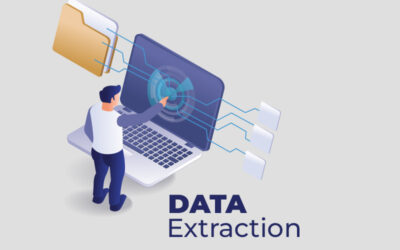Today, as organizations adapt to a paperless culture, it is necessary to clean data at regular intervals. Data cleansing is the process of correcting and fixing inaccurate and inconsistent data in the business database. It is also known as data scrubbing. It increases the reliability, consistency as well as value of your business.
Data cleansing is an umbrella term for many processes including standardizing data, identifying and fixing data, fixing errors and missing values, erasing wrong data, formatting and so on. There are even tools like Trifacta Wrangler, TIBCO Clarity, Cloudingo and so forth for easing the process of data cleansing. However, if you have a bulk amount of inconsistent and inaccurate data in your database, then data cleansing outsourcing is an ideal option for identifying and removing bad or poor data effectively.
The benefits of data cleansing include:
- Improves decision-making process
- Increases marketing and sales
- Enhances operational performance
- Improves the usage of data
- Reduces data cost
Though it has many benefits, there are many challenges involved in this process. Let’s take a look at these challenges.
Challenges Involved in Data Cleansing
-
- Inconsistent data: Businesses have to manage large-volume data on a daily basis. Data includes structured data that can be cleaned, parsed, and analyzed easily. However, along with structured data, unstructured data also exists in the database. This data includes missing data, irregular or inconsistent data and so on that is difficult to manage and use effectively. Unstructured data has to be pre-processed before it can be analyzed. Audi-video files, emails, presentations, webpages and so on may all contain this type of data.
-
- Time-consuming: The process of data cleansing is time-consuming and at times tricky. The process involves removal of duplications, replacing or removing missing data, correcting values that are misfiled and turning them into consistent format. After cleaning data, they have to be secured in a specific location. For that, the data scientists have to maintain a log to ensure whether the right data underwent the right data cleansing procedure. Thus, they have to design a well-structured framework to avoid repetitions. They have to put a lot of manual effort into getting error-free data. There are no particular tools that simplify this process.
-
- Bulk quantity of data: Business organizations have to handle bulk quantity of data every day — they may have to handle data in the scale of terabytes or even petabytes. As the data comes from different sources, it may be in different formats. Thus, formatting the data itself is a huge task. Though there are many tools to ease this process, formatting and preparing a large number of files for analyzing is a tricky and complicated task.
-
- Misspelling: Misspelling might be the result of typing errors. The wrong spelling and grammar can be detected and corrected for common words and grammatical errors. However, it would be difficult for a large database. Moreover, it would be difficult to point out the errors in spellings in the addresses, names and so on.
-
- Duplication: Duplication issues often happen when the same data appears multiple times on the same database.
-
- Contradiction: Contradiction errors occur when the real world entity is entered in two different values in the data. This would often end up in confusion.
-
- Incorrect Reference: Such types of errors related to incorrect data validation results in data mismatch. For instance, if a person enters the name of the department incorrectly in the field of the department, the process of data validation would mismatch the end result.
The other challenges data scientists have to deal with while preparing to cleanse the data include:
- Inconsistent data that creates confusion
- Incorrect data that could lead to bad decision-making and also affect client records
- Value entered in the wrong field
- Lexical errors
- Errors in domain format
- Missing values
- Violations in integrity constraints
- Embedded values
Steps for Data Cleansing
Step 1: Identifying Critical Fields
Data cleansing is a costly process. In this process, all fields are important as some fields are required for auditing purposes. In addition, some fields depict the name of the system or other parameters. Thus, it is necessary to analyze the critical fields among data of a given project to ensure proper and effective data cleansing.
Step 2: Data Collection and Storing
After the step one of identifying critical fields, the next step is to collect the entire data from the data source and store them either on the database or storage system for the process of data cleansing.
Step 3: Removing Unwanted or Duplicate Files
When data flows from different sources, there is a chance for the occurrence of duplication of files in the database. De-duplication of data would help to free up the storage as well as redundancies from the data.
Step 4: Enter Missing Values
When a large volume of data flows to the database, there occurs the chance for missing important values. If you didn’t handle the missing data correctly, it would throw an exception while performing analysis as the algorithm would not accept missing values. You can either drop the fields containing missing values or enter data accurately after analyzing historical data.
Step 5: Standardizing the Existing Data
Before transferring the data for data cleansing process, standardizing of data is necessary for easy replacement.
Step 6: Setup the Process
After analyzing the data from the dataset that has to be cleansed, the next step is to determine the process the data should be undergone for cleansing. If it is a small set of data, you can perform the data cleansing task manually. However, if you have to handle a large set of data, then you can rely upon certain tools for the data cleansing process.
Step 7: Set up the Schedule
After determining the process of data cleansing, now it is the time for setting up the schedule of how often the data has to be cleansed in the database. You can schedule the process on an hourly, daily, weekly or monthly basis based on the inflow of the data to the database.
Step 8: Perform QA
After the data cleansing process, you can perform QA on the cleansed data. In this process, you should answer the following questions.
- Does the cleansed data meet your requirements?
- Is the database ready to feed into the algorithm?
- Is the database free from unwanted data and contain standardized fields?
Step 9: Review, Adapt and Repeat the Data
After data validation, you can include the space for dropping reviews or comments and adapt those reviews for better changes and repeat the process until the data becomes free from errors or inconsistencies.
Current Data Cleansing Approaches
-
- Data analysis: In order to detect the errors and inconsistencies to be removed, the data needs to be analyzed thoroughly. In addition to manual verification, an analysis program can be used for analyzing data before it is cleansed to ensure the accuracy of the data.
-
- Verification: Verifying the accuracy and correctness of transformation of workflow and effectiveness of data before data cleansing.
-
- Transformation: The process of transformation can be done either when refreshing data warehouse or during answering queries.
-
- Backflow of cleansed data: After the process of data cleansing, the clean and accurate data would be made available on the original source. It improves the accuracy of data as well as helps to avoid future cleansing works.
Tools for Data Cleansing
As mentioned earlier in this blog, if you need to handle a bulk amount of data, you can rely upon data cleansing tools for simplifying the data cleansing process. However, these tools not only cleanse the process but also generate accurate results. Some tools for data cleansing include:
- Microsoft DQS
- TIBCO Clarity
- Tableau Prep
- OpenRefine
- Trifacta
- Cloudingo
- SAS Data Quality
- Oracle Enterprise Data Quality
- IBM Infosphere Information Server
- RingLead
- Drake
| To know more about data cleansing tools, read: What Are The Best Data Cleansing Tools? |
Data cleansing is an essential process for the smooth and effective working of an organization. Partner with an experienced data entry company to maintain the accuracy and consistency of your valuable business data.
| Related Blogs:
What Is Data Cleansing – A Short Guide Top 4 Benefits Of Outsourcing Data Cleansing 7 Data Cleansing Best Practices for Increased Market Credibility |




